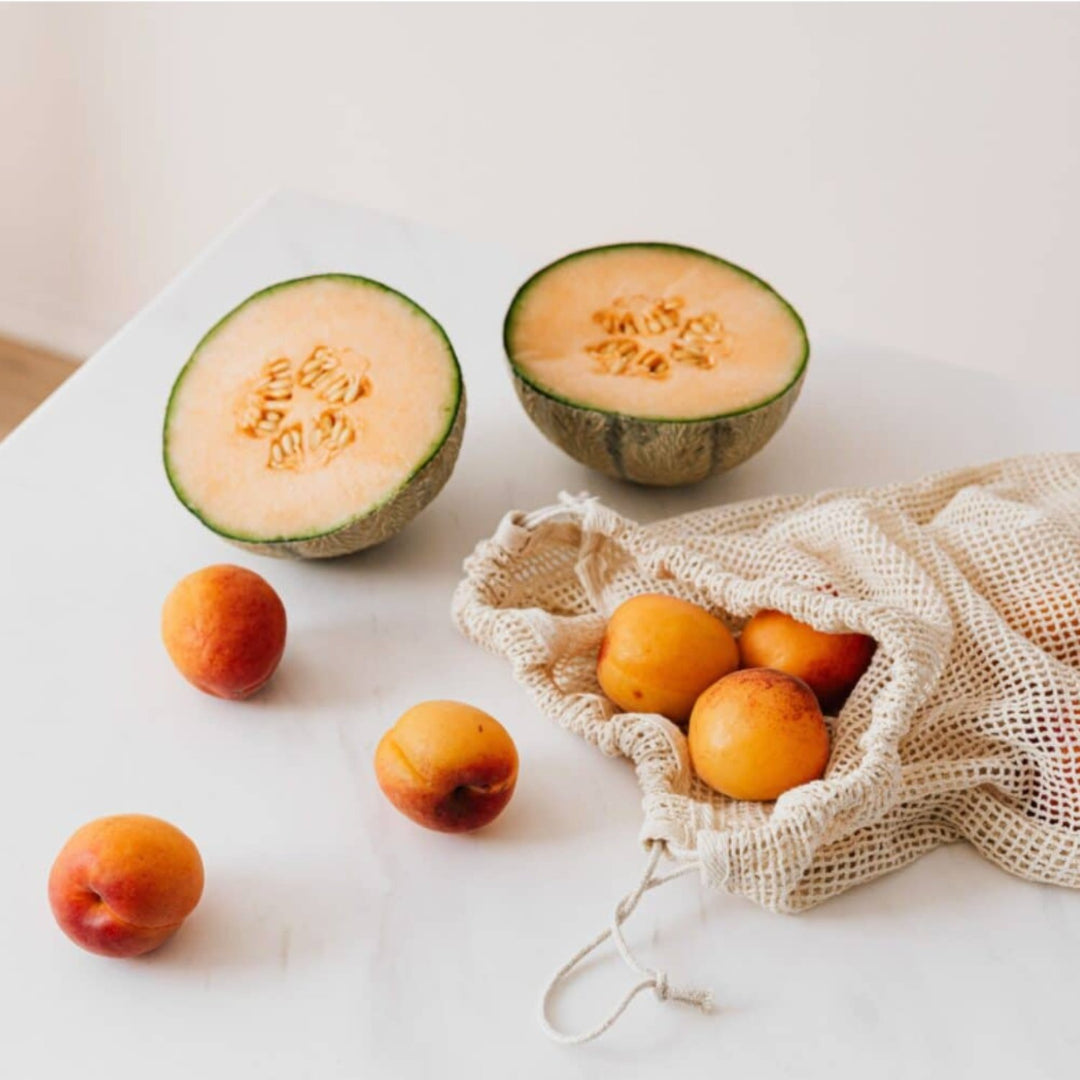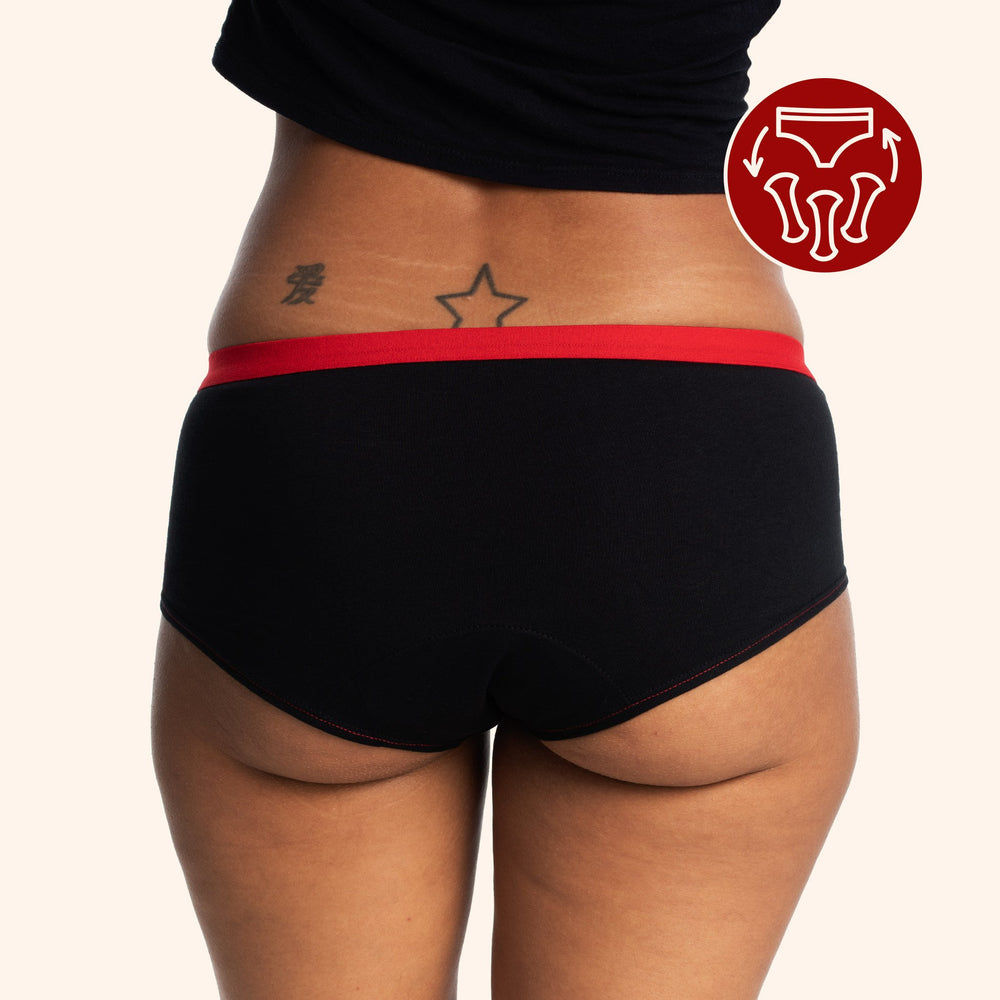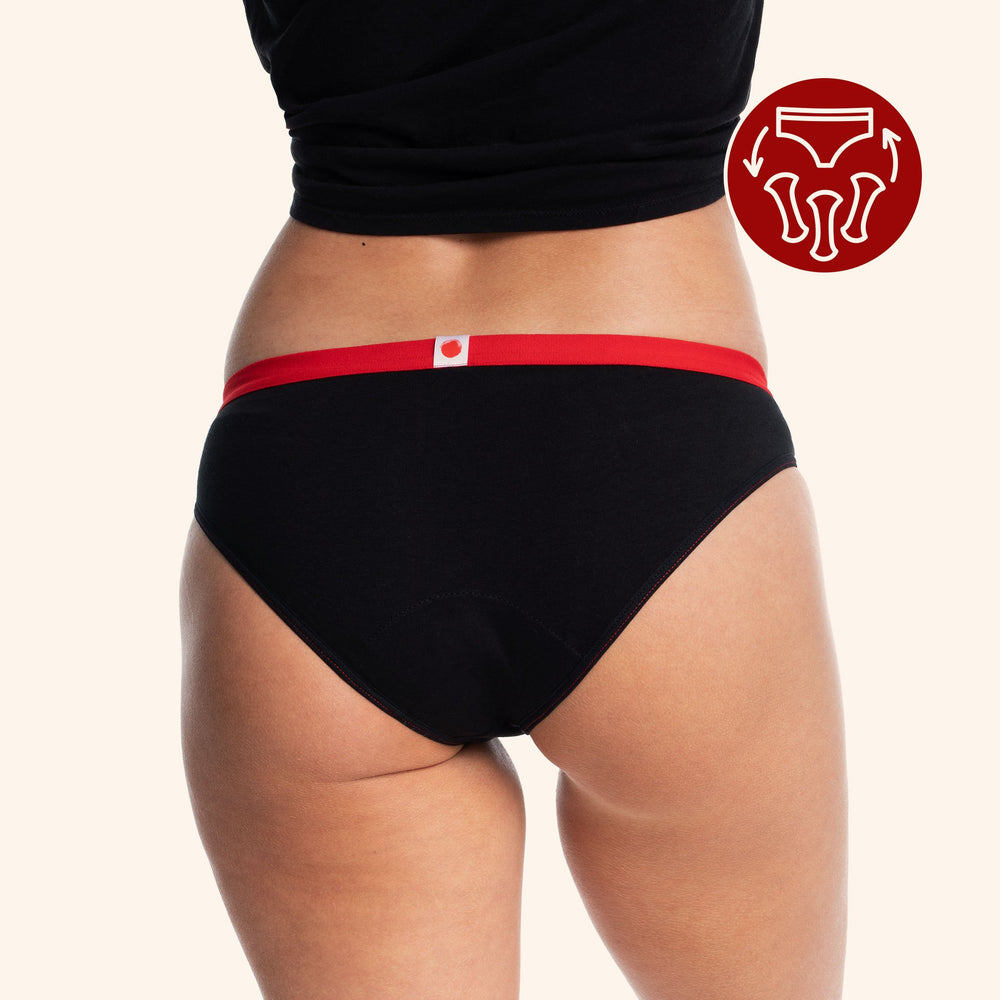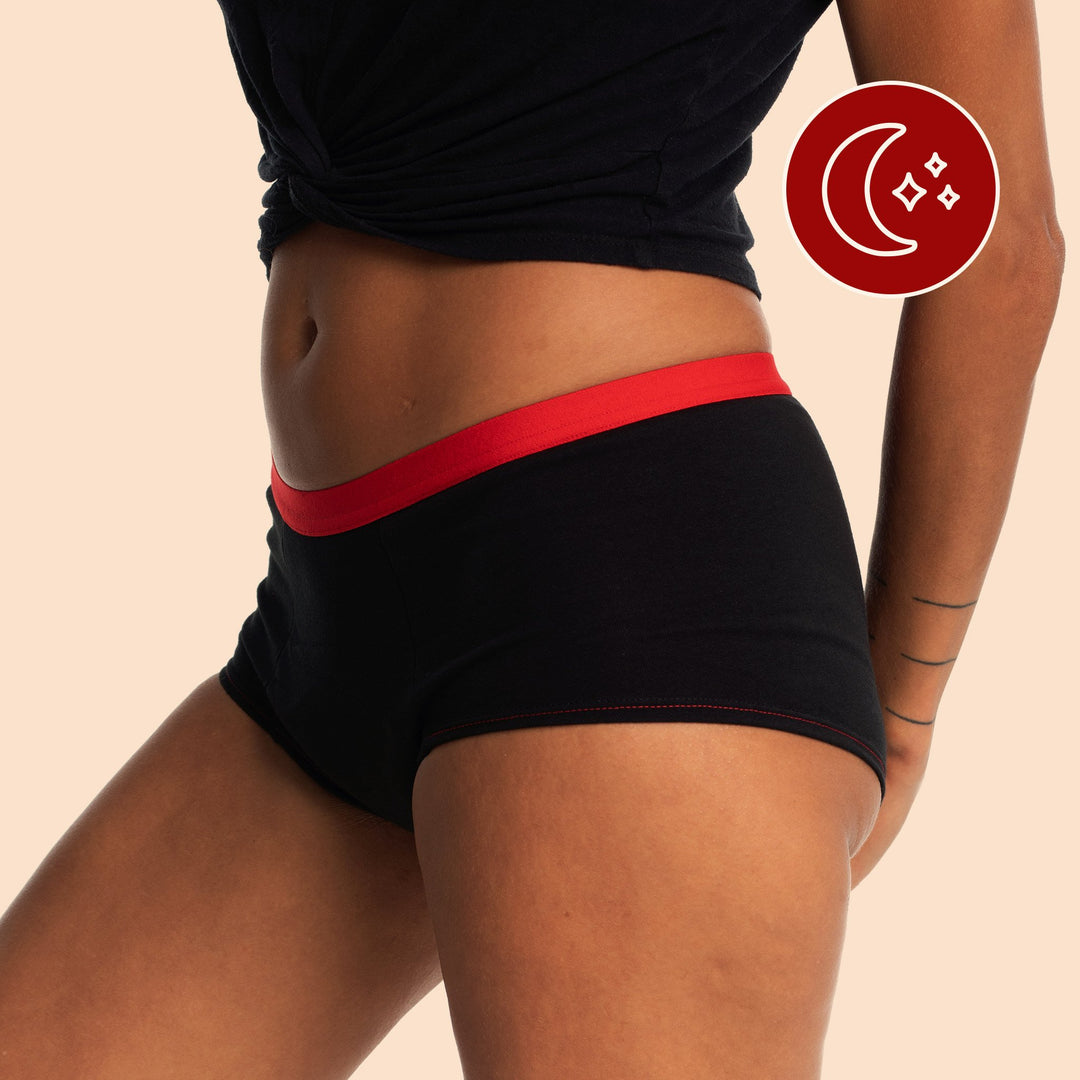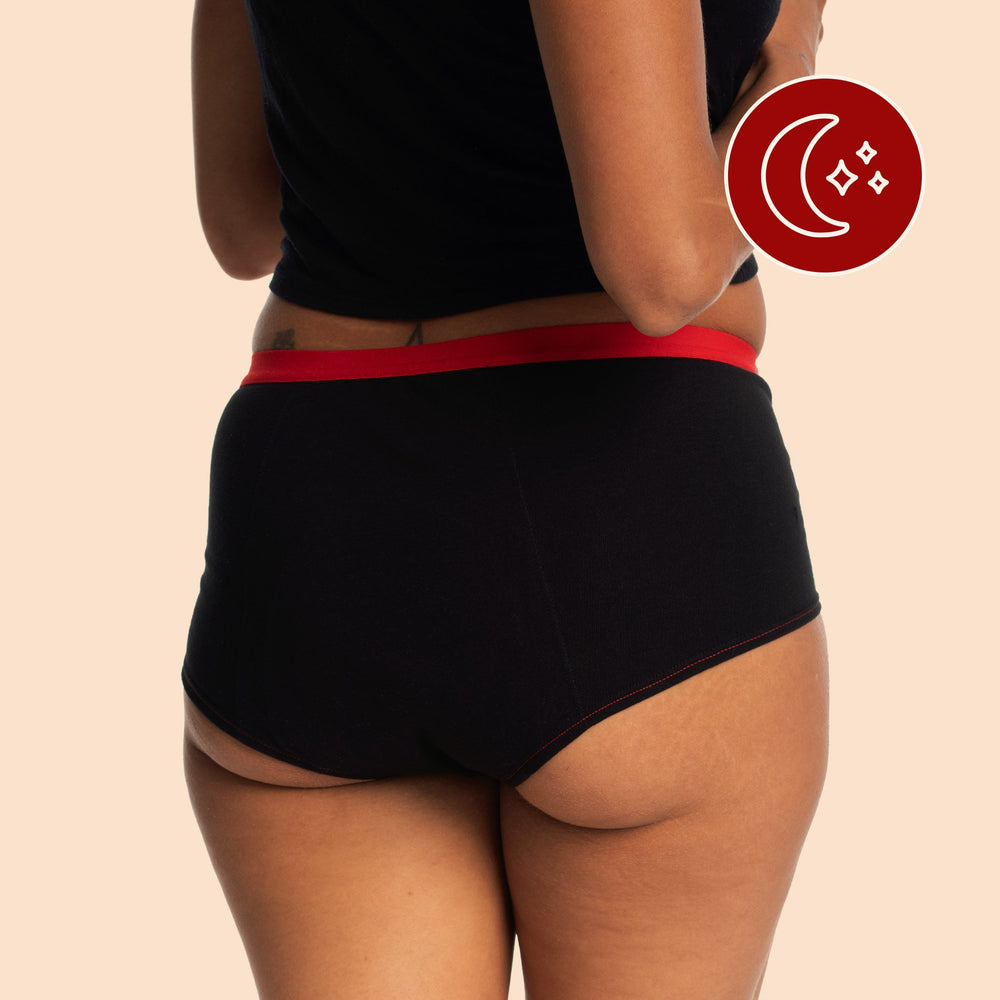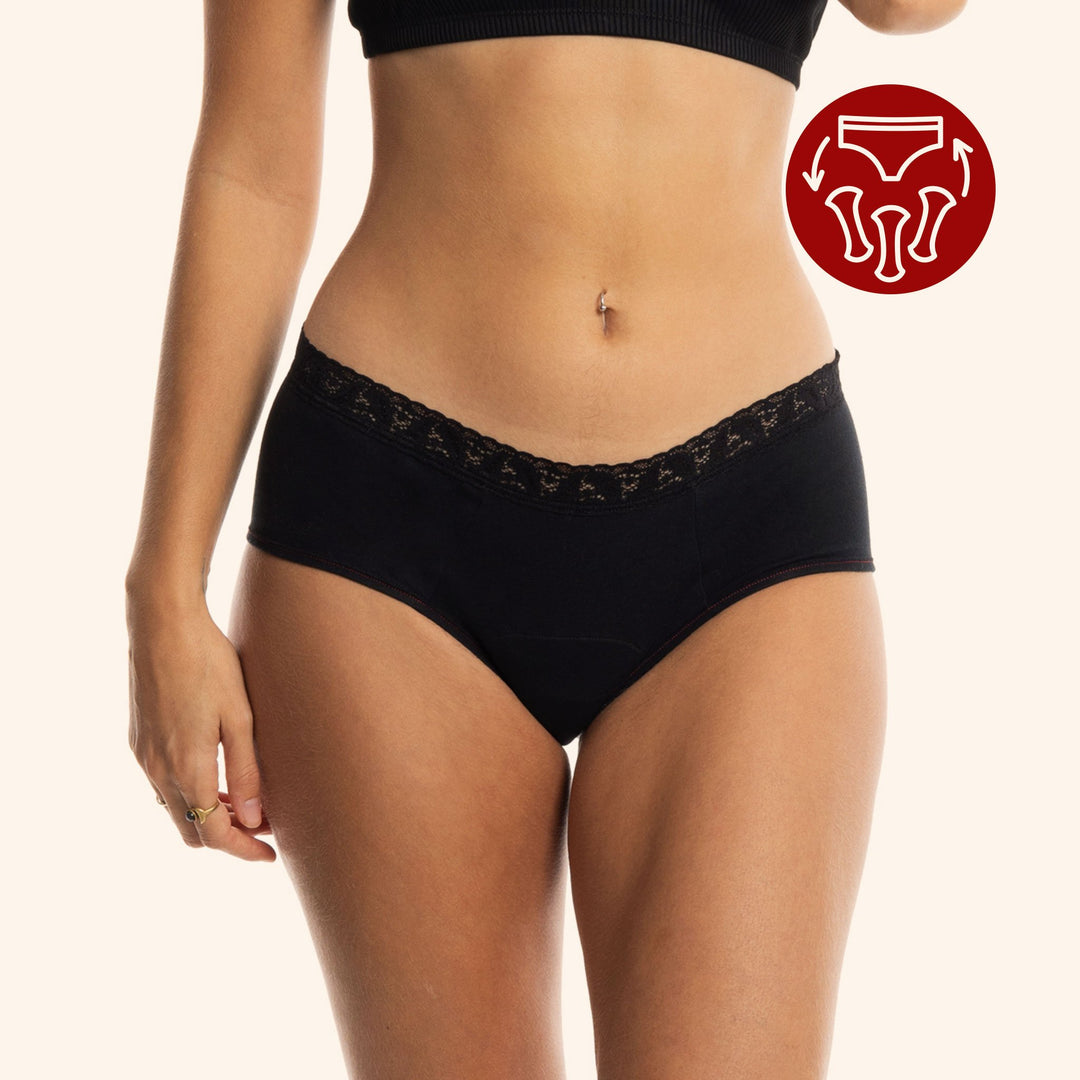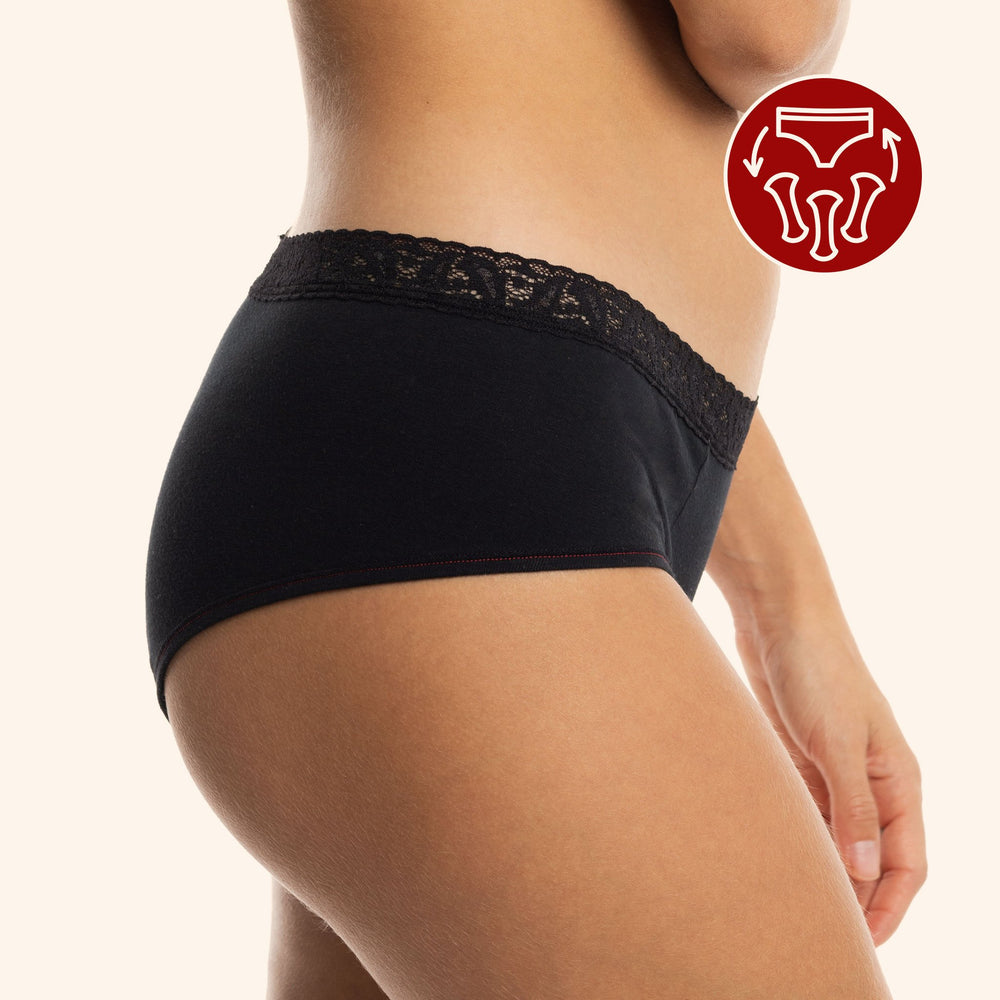
Have you ever seen the horrible pile of forgotten soup they call the Great Pacific Garbage Patch? It’s huge! They say it’s twice the size of Quebec! It’s one (but not the only) large-scale area where plastic bags, bottles, cans, nets and other disposable non-biodegradable products accumulate, increasing in size each year. Once you’ve seen it, you won’t want to contribute to it! Adopting environmentally conscious menstruation habits is therefore a logical solution. Here are four reasons to opt for a zero-waste menstruation.

1. Because the planet is not a trash can!

Alas, ladies, be aware that using sanitary tampons and pads (as well as their applicators) add to (or at least sprinkle) this indigestible soup that’s so big, it makes you want to cry about the future of our planet.
Imagine! A woman menstruates on average 13 times a year, or 520 times during her fertile years. This same woman will therefore need all those pads and tampons to get her through each month, each one individually packaged in a cardboard carton and often fitted with an applicator.
During her lifetime she will produce a total of 275 pounds in hygienic waste! (source: thedailybeast.com)
If you multiply that by the number of women who menstruate on earth (nearly 2.34 billion), that gives us (hold on to your hats) 289,391,932 tons of menstrual waste every year.
Let’s not forget that this waste, which takes more than 450 years to decompose, is now accumulating in our landfills and the floating islands of the Pacific. (source: ConsoGlobe.com)
Ladies, it’s time to act! Let’s use our blood for good! (Oops… common sense!) Let us value and protect what is most sacred. Producing a massive amount of waste because of our periods completely contradicts our role as women: those who carry life.
Now, as Spiderman’s uncle said, “With great power comes great responsibility.”
And one of our responsibilities is to take care of the environment … and our bodies!
2. OUR BODY, WE MUST KEEP HEALTHY

The impact of feminine products on women’s health is a subject that has been running a lot of “blood” under the bridge for several years.
In fact, according to the recent analysis of several popular tampon brands, tampons contain between 20 and 30 chemical components, including dioxins, which is found in the top 10 of the most toxic products in the world. (Yikes!)
The chemicals contained in tampons, for example, are absorbed by the vagina’s mucous membranes. This generates many health problems such as endometriosis, birth defects, decreased fertility, the onset of diabetes, altered immune systems, and even cancer.
The good news is that we can reduce this amount of toxic waste for the health of the planet and for women by using alternatives to disposable sanitary products. By opting for zero-waste menstruation. In doing so, we openly display our values and work to build a society that looks like us.
3. BECAUSE BUYING IS VOTING

Yes! Buying smartly (when necessary), or even consuming less, is voting! Each purchase (especially the products we choose not to buy) is a way of taking a stand for what we believe is right: the well-being of the environment, health, and so on.
If we want to live in a better world, we need to be aware of the real impact of our actions and collectively commit to consuming differently. We call this standing up and taking action.
Consuming less means getting what we really need.
So we avoid:
- The creation of materials (often useless, let’s be honest) derived from resources sometimes renewable but often non-renewable
- The production of packaging (which remember, fills our landfills) and is also created from our resources
- The transport of these objects and its environmental impact (often by ocean liner, coming directly from … the other side of the world!)
Smart consumption means buying quality products, made by local businesses, which:
- Ensures a sustainable product that often proves to be more cost effective than products with questionable quality that break down in the amount of time it takes to watch your favorite show La Petite vie.
- Minimizes the transportation of materials and the environmental costs associated with it
- Supports local businesses, which results in a real impact on the lives of entrepreneurs
- Ensures that employees who make the products work in a safe and healthy environment according to rigorous work standards
But back to our underwear! When we invest and rely on shady, disposable sanitary products, it sends the message to multinational companies (who fundamentally are not advocating for the health of women or the planet) that we approve of their values and the resulting pollution their materials create. Not to mention we make them richer! Shall we add this all up?
4. BESIDES, ECO-FRIENDLY MENSTRUATION, IT’S EASY ON YOUR WALLET

In Canada, the average woman spends a minimum of $56.40 a year on tampons and sanitary pads, or $2,100 in a lifetime!
Imagine the number of maple syrup cans you could buy with that! 300! No less! 300 cans of pure happiness on your lunch table!
Reusable feminine hygiene product options are more cost-effective in the long term. Here are two examples that will convince you without a shadow of doubt:
- The Menstrual Cup can cost up to $40 but can last up to 10 years! (Find our more with our Menstrual Cup Guide).
- Menstrual panties, like Mme L’Ovary’s washable and reusable Basic Kit, will cost you, over a 40-year period, $1,430 instead of $2,100 if you buy disposable hygiene products, plus they won’t harm your health or the environment!
Menstrual panties: 1 – Disposable Sanitary Product: 0
Well! The reasons why it’s important to consider alternatives to disposable products are many and fortunately, the options for reusable feminine hygiene products are just as abundant!
TO GO A STEP FURTHER ON ZERO-WASTE MENSTRUATION
Check out our article: Solutions for a Zero-Waste Menstruation, where we analyze the best solutions and detail the pros & cons of each—so you can find the best fit for your needs! Eco-friendly menstruation aligned with your values.







